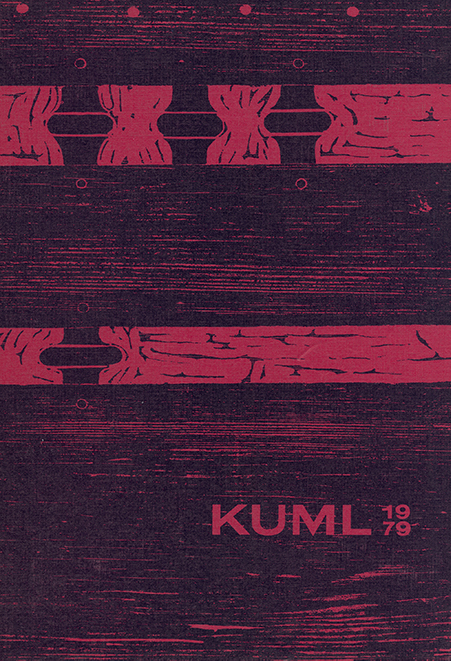Medico-legal examination of the peat-bog body from Elling
DOI:
https://doi.org/10.7146/kuml.v28i28.106955Keywords:
medico-legal examination, elling womanAbstract
Medico-legal examination of the peat-bog body from Elling
The same medico-legal methods used to describe unidentified corpses of recent date can be used in the study of bodies from ancient time. Medico-legal examination of Danish peatbog bodies has been done previously on the Tollund Man (4,15) and the Grauballe Man (12).
The Elling body was found in a bog in 1938, described briefly, photographed, and subsequently stored without additional conservation.
In 1978, new archaeological (3), røntgenological (9) and odontological (13) studies were made. Medico-legal examination at this time revealed a defective, shrunken, brownblack corpse. The skin, which was tight and dark, was preserved on parts of the head and on the neck and chest. None of the internal organs were preserved. The skeleton was black, shrunken, deformed, defective and decalcified and had a rubber-like consistency. The hair was reddish-brown, the result of tanning in the acidic bog water. The hair was braided.
The face and the cranium were seriously defective and the identifiable cranial sutures were without signs of ossification. The pelvis was badly deformed (fig. 3) and the greatly defective arm and leg bones were thin and revealed weak traces of muscular insertion. The form of the pelvis bones and the characteristics of the other bones lead us to believe that the corpse is that of a woman.
The cranial sutures, the joint surfaces of the pelvic bones, the closed growth zones of the long bones (1, 8, 11, 14) and the lack of osteorthritic degeneration indicate that the woman died at an age of 25-35 years.
None of the bones reveal any sign of fracture incurred during the woman's life. In fact, the only demonstrable signs of disease are the slightly abnormal shapes of 2 lumbar vertebrae and the osteoarthritic changes associated herewith.
In the neck area a deep groove encircling the neck was found. Posteriorly the two branches of the groove converge against the back of the head (figs. 1 and 2). The groove had probably continued high up on the anterior surface of the neck, where skin and soft tissues were lacking. The groove is probably the result of hanging, which might have been effected with the leather band found with the body. It is therefore probable that the cause of death in this case was hanging, as it most probably was with other Danish bog corpses such as the Tollund Man and the Borremose Man.
Bodies sunk in water decompose relatively slowly depending upon the water temperature. Bodies sunk in bogs during the winter are conserved by the bog water before decomposition can begin. However, the temperature during the summer can be so high, that decomposition of the viscera cannot be avoided. Many bog corpses have been found covered with poles, branches, and rocks (5), which has been attributed to religious or superstitious motives (10). However, these measures might have had the practical purpose of hindering the corpses from floating to the surface after the onset of decomposition. Thus, the existence of the anchors could imply that death had occurred in the warmer months. The stomach contents of 3 Danish bog corpses (Borremose Man, Grauballe Man and Tollund Man) indicate that they met their death during the winter (6). None of them were fixed in the bog. In the case of the Elling body, conclusive evidence indicating time of death is missing.
In summary, we can conclude that the bog body from Elling was a young person, probably a 25-35 year-old woman, and that the cause of death was hanging. No other evidence of violence was found.
Markil Gregersen
Downloads
Published
How to Cite
Issue
Section
License
Fra og med årgang 2022 er artikler udgivet i Kuml med en licens fra Creative Commons (CC BY-NC-SA 4.0).
Alle tidligere årgange af tidsskriftet er ikke udgivet med en licens fra Creative Commons.


